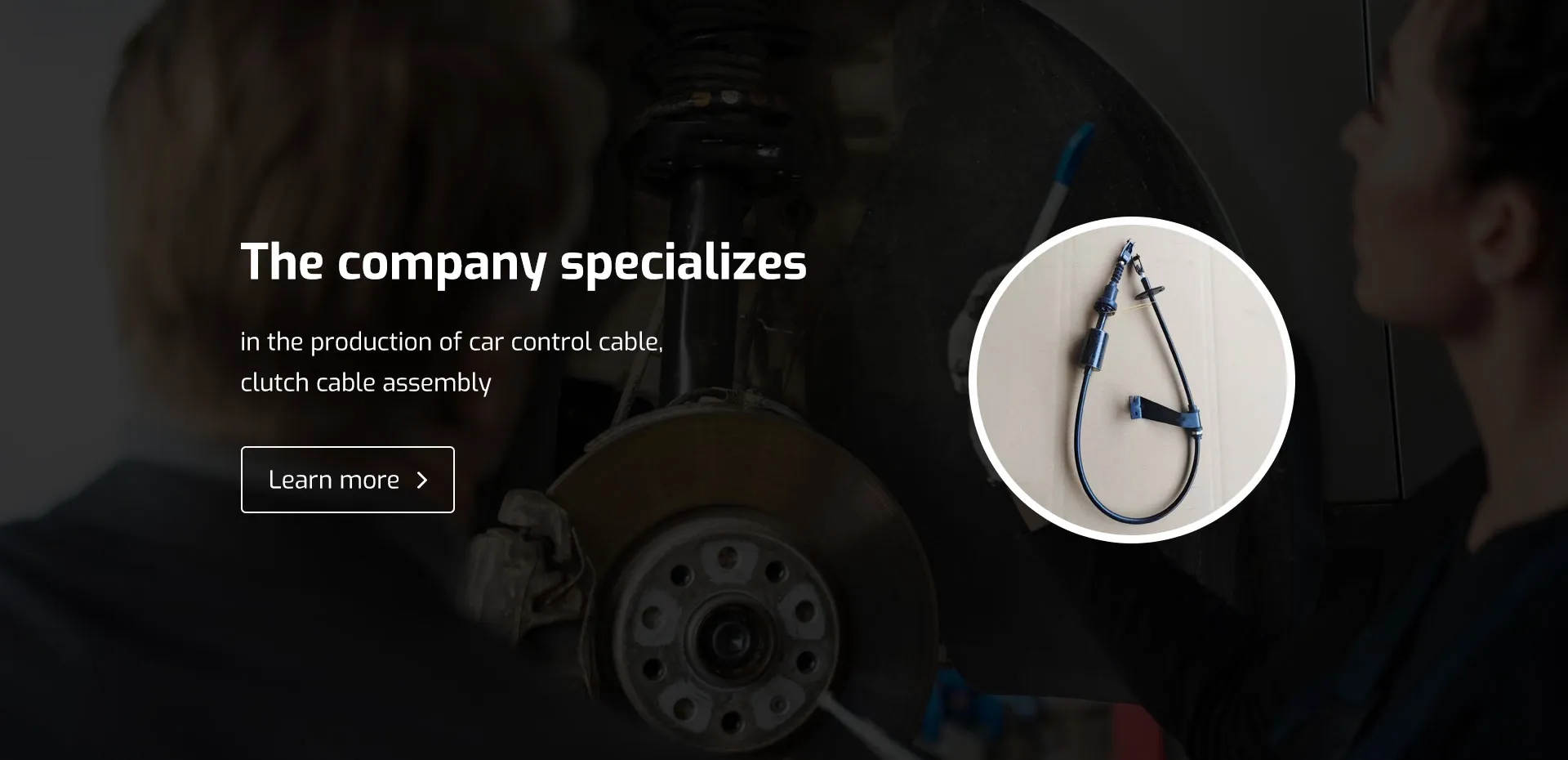accelerator throttle cable
Understanding the Accelerator Throttle Cable Function and Maintenance
The accelerator throttle cable is a crucial component in the operation of internal combustion engines, particularly in gasoline-powered vehicles. It serves as the bridge between the driver’s intention to accelerate and the engine's response, directly influencing the vehicle's performance and responsiveness. Understanding how the accelerator throttle cable works, its components, and its maintenance is essential for any vehicle owner.
The Function of the Accelerator Throttle Cable
At its core, the accelerator throttle cable connects the accelerator pedal to the throttle body of the engine. When the driver presses the accelerator pedal, this action pulls the cable, which in turn opens the throttle valve in the throttle body. This valve controls the amount of air (and consequently fuel) entering the engine, thereby regulating engine speed and power output.
The accelerator throttle cable is often referred to as a mechanical cable, as it operates via physical movement. In modern vehicles, especially those equipped with electronic throttle control (ETC) systems, the function of the throttle cable has been mostly replaced by electronic sensors and actuators. However, many older vehicles still rely on the traditional cable system, making an understanding of its operation critical for maintenance and troubleshooting.
Components of the Accelerator Throttle Cable
The accelerator throttle cable consists of several key components
1. Cable Housing This is the outer casing that protects the inner cable from damage and environmental factors. 2. Inner Cable This flexible cable runs through the housing and connects the accelerator pedal to the throttle body. It is designed to withstand high tension and friction. 3. End Fittings These are the components at either end of the cable that connect it to the accelerator pedal and the throttle body. They ensure a secure attachment and efficient transfer of force. 4. Return Spring Located at the throttle body, this spring ensures that the throttle returns to its closed position when the pedal is released, preventing unintended acceleration.
accelerator throttle cable

Common Issues and Maintenance
Over time, the accelerator throttle cable can suffer from wear and tear, leading to various issues such as stiffness, fraying, or complete failure. Here are some common problems and how to address them
- Sticking or Stiff Pedal This may indicate that the cable is frayed or has debris obstructing its movement. Regular inspection of the cable for wear and a good cleaning can alleviate this issue. Lubrication may also be necessary if dryness is the cause of the stiffness.
- Unresponsive Throttle If the throttle doesn't respond as expected, there could be a problem with the integrity of the cable. A thorough check should be carried out to identify any breaks or disconnections. If any damage is found, replacement is necessary.
- Improper Length If the cable is too long or too short, it can lead to poor throttle response. Ensuring the correct fit is vital for optimal performance.
Conclusion
The accelerator throttle cable plays a vital role in the functionality of a vehicle's engine, translating the driver’s commands into action. Proper maintenance and timely replacements when necessary can improve vehicle performance and enhance safety. Understanding this component's workings empowers vehicle owners to troubleshoot issues effectively, ensuring a smoother, more responsive driving experience. Whether you own an older model relying on a mechanical system or are transitioning to modern electronic systems, awareness of your vehicle's throttle mechanism is essential for any informed driver. Engaging in routine inspections and maintenance can prolong the life of the accelerator throttle cable and contribute to the overall efficiency of your vehicle.
-
Workings of Clutch Pipe and Hose SystemsNewsJun.04,2025
-
The Inner Workings of Hand Brake Cable SystemsNewsJun.04,2025
-
The Secrets of Throttle and Accelerator CablesNewsJun.04,2025
-
The Hidden Lifeline of Your Transmission Gear Shift CablesNewsJun.04,2025
-
Demystifying Gear Cables and Shift LinkagesNewsJun.04,2025
-
Decoding Clutch Line Systems A Comprehensive GuideNewsJun.04,2025
